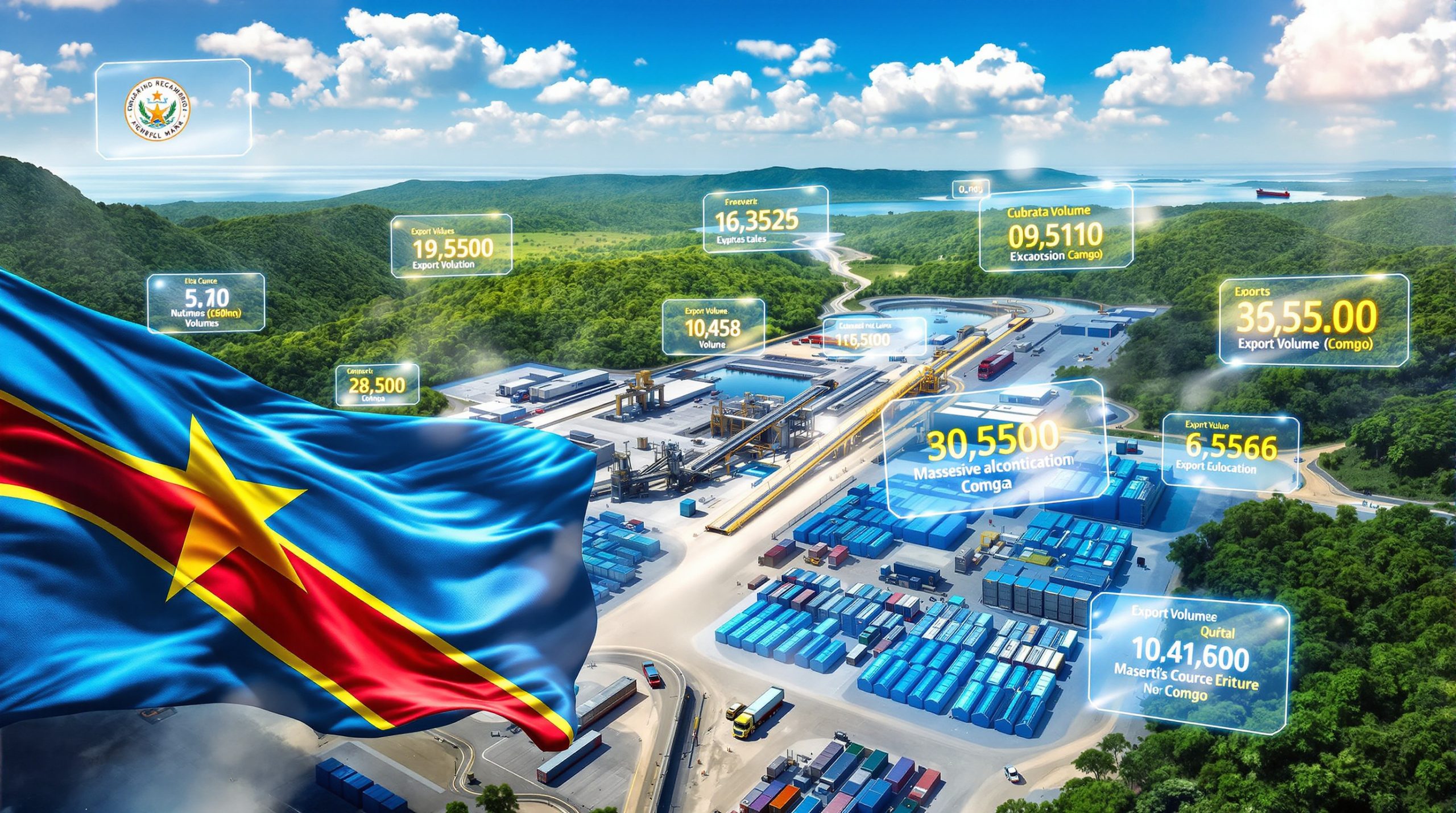China's coal market is experiencing unprecedented turbulence as extreme weather patterns and intensified government safety oversight create a perfect storm of supply disruptions and regulatory pressure. China's weather and coal safety scrutiny are fundamentally reshaping market dynamics and pushing prices significantly higher throughout 2025, reflecting broader challenges within the mining industry evolution.
Benchmark thermal coal prices at Qinhuangdao port have climbed to 723 yuan per ton as of October 2025, marking a substantial recovery from the four-year low of 610 yuan recorded in June. This 18.5% increase over four months reflects the growing influence of regulatory scrutiny and climate volatility on China's energy sector. The price movement signals a fundamental shift in how safety enforcement and weather extremes are becoming permanent fixtures in coal market calculations.
The combination of floods in major production regions, unseasonable temperature swings, and Beijing's expanded mine supervision program has created an environment where traditional supply-demand forecasting becomes increasingly complex. Industry analysts note that while coal markets remain historically weak, these new variables are establishing a floor for prices that didn't exist in previous years, presenting supply chain challenges across the sector.
Government Safety Initiatives Transform Market Structure
Beijing's comprehensive approach to mine safety has evolved beyond routine inspections into what industry observers describe as a systematic restructuring of operational standards. The government's anti-involution campaign, designed to eliminate overcapacity through enhanced oversight, represents a strategic shift toward sustainable production practices rather than volume maximization.
The timing of these initiatives has proven particularly significant, with the Fourth Plenum creating heightened awareness across China's coal sector. Mining companies have implemented precautionary measures to avoid incidents that could attract unwanted attention during this critical political period. This cautious approach has contributed to supply constraints as operators prioritise compliance over maximum output, demonstrating the importance of boosting safety measures across the mining industry.
| Coal Price Recovery Timeline |
|---|
| June 2025: 610 yuan/ton (4-year low) |
| October 2025: 723 yuan/ton |
| Total Increase: 18.5% over 4 months |
The November deployment of high-ranking government inspectors across China's industrial sectors marks the beginning of what officials term an "annual safety exam." This comprehensive evaluation process extends beyond coal mining to encompass broader industrial safety practices, creating industry-wide pressure for compliance upgrades and operational improvements.
Shanxi province has emerged as a particular focus area due to its concerning safety record and significant contribution to national coal production. The special attention directed toward this region demonstrates Beijing's commitment to addressing historical safety deficiencies while maintaining energy security. Furthermore, mining operations in Shanxi now face enhanced scrutiny that includes technology upgrades, workforce training improvements, and infrastructure modernisation requirements.
Climate Disruptions Amplify Supply Chain Vulnerabilities
Extreme weather events have exposed critical vulnerabilities in China's coal supply chain, with major production hubs experiencing unprecedented challenges. Shanxi and Shaanxi provinces, which collectively represent substantial portions of national coal output, have encountered significant flood-related disruptions that extend beyond immediate production halts.
The flooding impact creates cascading effects throughout the supply network:
• Transportation Infrastructure Damage: Rail lines and trucking routes face extended repair periods
• Equipment and Facility Flooding: Underground operations require extensive dewatering and safety assessments
• Workforce Displacement: Mining communities face temporary relocations affecting operational continuity
• Quality Control Challenges: Water damage to stored coal affects product specifications
These disruptions coincide with the completion of winter restocking activities, potentially limiting China's ability to compensate through increased imports. The timing creates a supply squeeze precisely when heating demand typically increases, though abundant hydropower generation from heavy rainfall provides some demand relief.
The contradictory nature of climate impacts has created unusual energy consumption patterns across different regions. Central and eastern China continue experiencing unusually high temperatures that sustain air conditioning demand well into traditional cooling season endpoints. Simultaneously, northern regions have activated heating systems approximately one month earlier than historical averages due to unseasonable cold and persistent precipitation.
China's coal market faces upward price pressure from three primary sources: government safety scrutiny reducing supply, weather extremes disrupting production, and unpredictable climate patterns affecting demand timing.
Regional Safety Enforcement Creates Operational Challenges
The intensification of safety enforcement across China's coal-producing regions has introduced new operational complexities that extend beyond traditional compliance requirements. Mining companies now navigate a landscape where safety performance directly influences production authorisation and market access, requiring integration of modern mine planning approaches.
Shanxi province's designation for special attention reflects broader concerns about balancing production capacity with safety standards. The provincial government has implemented enhanced monitoring systems that track real-time safety metrics, equipment performance, and workforce compliance. These systems generate data that regulatory authorities use to make immediate operational decisions, including temporary production suspensions when safety parameters indicate elevated risk.
The comprehensive nature of current safety initiatives encompasses:
• Advanced Monitoring Technology: Real-time gas detection, structural monitoring, and equipment performance tracking
• Enhanced Training Programs: Mandatory certification updates and expanded safety education requirements
• Infrastructure Modernisation: Ventilation improvements, emergency response systems, and communication upgrades
• Third-Party Auditing: Independent safety assessments conducted by certified inspection agencies
These requirements represent significant capital investments for mining operations, particularly smaller producers who may lack resources for comprehensive upgrades. The financial pressure creates market consolidation opportunities for larger operators while potentially reducing overall production capacity as marginal mines exit the market.
How Are Mining Companies Adapting to New Safety Standards?
Companies across China's coal sector are implementing comprehensive transformation strategies to meet evolving safety requirements. The adaptation process requires substantial investment in both technology and human resources, with successful operators demonstrating that compliance improvements can enhance operational efficiency rather than hinder productivity.
Leading mining companies are establishing integrated safety management systems that combine real-time monitoring with predictive analytics. These systems enable proactive identification of potential hazards while maintaining production continuity through optimised operational planning.
Supply-Demand Balance Shifts Under New Constraints
The intersection of regulatory compliance costs, weather-related disruptions, and economic conditions has fundamentally altered China's coal supply-demand equilibrium. Traditional forecasting models struggle to account for the unpredictable nature of safety inspections, climate events, and their combined market impacts.
Supply-side constraints now include multiple variables that compound each other's effects. Regulatory compliance requirements increase operational expenses while reducing operational flexibility. Weather disruptions create both immediate production halts and longer-term infrastructure repair needs that affect production capacity for extended periods. In addition, quality control measures, implemented as part of safety improvements, reduce overall output volumes as substandard coal gets rejected or requires additional processing.
Demand patterns reflect the complexity of China's economic transition and climate volatility. Economic growth rates influence baseline industrial energy consumption, while unusual weather patterns create unpredictable spikes in residential and commercial demand. The abundance of hydropower generation during heavy rainfall periods reduces coal dependency in power generation, though this benefit becomes unavailable during dry periods.
Market analysts acknowledge the difficulty of predicting specific price movements in this environment. Industry experts indicate expectations for continued mild price increases, though the magnitude remains highly uncertain due to competing factors. The bias toward higher prices reflects supply constraints, while economic headwinds and alternative energy availability provide counterbalancing downward pressure.
Investment Landscape Adapts to New Market Realities
China's weather and coal safety scrutiny are prompting strategic reassessments across the investment community. Traditional coal sector investments now require evaluation frameworks that incorporate regulatory compliance costs, weather resilience requirements, and long-term structural changes in government oversight, similar to the considerations facing energy transition challenges across the broader energy sector.
Safety compliance has emerged as a permanent cost factor rather than a temporary adjustment period. Mining operations must budget for ongoing technology upgrades, enhanced monitoring systems, and expanded training programs. These requirements represent substantial capital commitments that affect project economics and return calculations for both existing operations and new developments.
Climate adaptation investments are becoming essential for operational continuity. Mining companies are implementing weather-resistant infrastructure, improved drainage systems, and emergency response capabilities designed to minimise disruption during extreme weather events. These adaptations require significant upfront investments but provide operational resilience that traditional mining infrastructure cannot match.
Investment priorities now emphasise:
• Technology Integration: Advanced safety monitoring and automated systems
• Infrastructure Resilience: Weather-resistant facilities and backup systems
• Workforce Development: Enhanced training capabilities and certification programs
• Supply Chain Diversification: Multiple transportation routes and storage facilities
The shift toward permanent structural changes rather than cyclical adjustments suggests that current market conditions may represent the new baseline rather than temporary disruptions. This perspective influences long-term investment strategies and operational planning across China's coal sector.
Global Market Implications of China's Transformation
China's domestic coal market transformation extends influence beyond national borders, affecting international commodity flows and pricing mechanisms. The country's position as both a major producer and consumer means that internal supply disruptions and regulatory changes create ripple effects throughout global coal markets.
International coal suppliers monitor China's import patterns closely, as changes in domestic production capacity directly influence demand for foreign coal. The completion of winter restocking activities, combined with domestic supply constraints, creates opportunities for international suppliers while potentially altering traditional trade relationships. According to recent market analysis, these supply disruptions have created significant trading opportunities for international coal exporters.
The regulatory standards being implemented in China may establish precedents for mining practices in other countries. International mining companies operating in China must comply with enhanced safety requirements, potentially transferring these practices to operations elsewhere. This technology and knowledge transfer could influence global mining safety standards and operational practices.
China's experience with integrating safety compliance and weather resilience into mining operations provides valuable insights for international mining companies facing similar challenges. The lessons learned from balancing production efficiency with regulatory compliance offer guidance for operations in other regions where safety standards are evolving.
What Role Does Technology Play in Safety Improvements?
Technology adoption has become central to meeting China's enhanced safety requirements while maintaining operational efficiency. Artificial intelligence and machine learning applications enable predictive maintenance and hazard identification, reducing both safety risks and operational downtime.
Mining companies are investing in IoT sensors, automated monitoring systems, and data analytics platforms that provide real-time visibility into operational conditions. These technological solutions often deliver return on investment through improved efficiency and reduced incident-related costs.
Future Market Evolution Under Uncertainty
The trajectory of China's coal market depends on the successful integration of safety improvements with production requirements. The current transition period creates uncertainty about long-term market structure, though early indicators suggest that enhanced safety standards will become permanent features rather than temporary adjustments.
Weather pattern analysis indicates that climate volatility may continue affecting production and demand patterns unpredictably. Mining operations are investing in meteorological monitoring and predictive systems to better anticipate weather-related disruptions. These investments may improve operational resilience but cannot eliminate weather-related risks entirely.
Economic recovery prospects influence the demand side of market calculations. Industrial production growth would increase baseline coal consumption, while continued economic challenges could maintain current subdued demand levels. The balance between these factors affects overall market dynamics and price trajectories, as detailed in recent industry reports.
Potential scenarios for market development include:
• Successful Safety Integration: Enhanced standards become routine without major production losses
• Climate Adaptation Success: Weather resilience investments minimise disruption frequency
• Economic Demand Recovery: Industrial growth increases baseline coal consumption
• Technology-Driven Efficiency: Advanced monitoring and automation improve both safety and productivity
The realisation of these scenarios depends on continued investment in infrastructure, technology, and workforce development across China's coal sector.
Strategic Considerations for Market Participants
China's weather and coal safety scrutiny require strategic adaptations from all participants, including producers, consumers, and investors. The integration of safety scrutiny and climate resilience into market fundamentals creates new decision-making frameworks that extend beyond traditional price and volume considerations.
Mining companies must balance compliance investments with operational efficiency to maintain competitiveness. The most successful operators are those implementing comprehensive safety and resilience improvements while optimising production processes. This balance requires substantial capital commitments and operational expertise that may favour larger, well-capitalised companies.
Energy consumers are adapting procurement strategies to account for supply volatility and price fluctuations. Diversified supply arrangements and flexible contracts help manage risks associated with weather disruptions and regulatory changes. Long-term supply agreements may include provisions for safety compliance costs and weather-related delivery adjustments.
Financial markets are developing new analytical frameworks for evaluating coal sector investments that incorporate regulatory compliance costs, weather resilience requirements, and long-term structural changes. Traditional valuation models require updates to reflect the permanent nature of safety investments and climate adaptation needs.
How Can Companies Prepare for Ongoing Market Volatility?
Successful navigation of China's transformed coal market requires comprehensive risk management strategies that address both regulatory and climate-related uncertainties. Companies implementing scenario planning and stress testing demonstrate greater resilience during market disruptions.
The development of flexible operational models enables rapid adaptation to changing conditions while maintaining safety standards. However, this flexibility requires significant investment in both technology and workforce capabilities.
Long-Term Implications for Energy Security
The success of China's coal market transformation will likely influence energy sector policies and practices internationally. The integration of enhanced safety standards with operational efficiency provides a model for other countries facing similar challenges in balancing energy security with environmental and safety requirements.
Market participants who successfully adapt to these new realities while maintaining operational efficiency will likely capture competitive advantages in China's evolving energy landscape. The transformation represents both challenges and opportunities for those positioned to navigate the complex intersection of regulatory compliance, climate resilience, and market dynamics.
Furthermore, China's weather and coal safety scrutiny demonstrate how regulatory and environmental factors can fundamentally reshape commodity markets. The lessons learned from this transformation period will inform future policy development and operational planning across the global energy sector.
The integration of safety improvements with production efficiency requirements creates a blueprint for sustainable resource extraction that balances economic objectives with social responsibility. This approach may become increasingly relevant as global energy markets face similar pressures for enhanced safety standards and climate adaptation measures.
Ready to Navigate the Evolving Mining Landscape?
China's unprecedented coal market transformation highlights how regulatory shifts and climate challenges are reshaping global mining dynamics, creating both risks and opportunities for astute investors. Discovery Alert's proprietary Discovery IQ model delivers real-time alerts on significant ASX mineral discoveries, empowering subscribers to identify actionable opportunities whilst broader markets grapple with supply chain disruptions and evolving safety standards across the mining sector.




